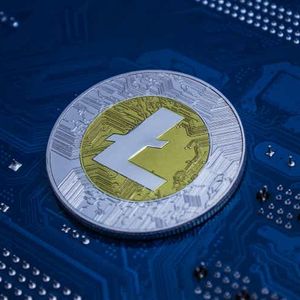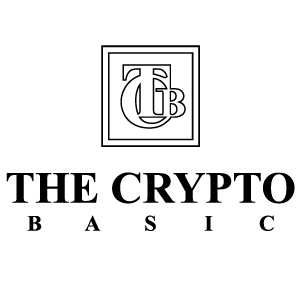

Litecoin: Buy Or Sell The Halving?
Summary Litecoin remains one of the most utilized crypto coins for payments in the market. Litecoin's halving cycle and limited supply cap make it interesting for long-term fundamental crypto investors. HODLers control more than half of the LTC supply as the coin becomes the top payment crypto on BitPay. In the last couple years, I haven't exactly hid my optimism for Litecoin (LTC-USD) generally speaking. Through Seeking Alpha, I've covered the silver to Bitcoin's (BTC-USD) gold three times: With Active Wallet Addresses Moving Higher, Don't Overlook Litecoin (Oct 2021) Crypto Contrarian: The Market Hates Litecoin, It Shouldn't (Oct 2022) Crypto Recession Strategy: Staking Litecoin (May 2023) To sum up the general thesis that ties all of those pieces together, LTC remains one of the most utilized crypto coins for payments in the market. Despite the clear utility of the coin, there is a general disinterest among most crypto investors and pundits. For me, this makes Litecoin quite interesting for a long term, fundamental crypto investor. Like Bitcoin, Litecoin uses a proof-of-work consensus mechanism and has a limited supply cap. Also like Bitcoin, Litecoin has a halving cycle. On August 2nd, 2023, Litecoin issuance will drop from 12.5 LTC per block to 6.25 LTC per block. In this article, we'll update some of the standard usage metrics and valuation metrics for LTC. We'll also explore Litecoin's historical performance following halving cycles to assess whether or not crypto investors should buy or sell this cycle's halving. Network Metrics Back in May when the Ordinals/BRC-20 boom put pressure on Bitcoin transaction fees, Litecoin was a major beneficiary of that fee spike. For a brief period, there were actually more daily active users of the Litecoin network than there were of the Bitcoin network as high cost transactions pushed users to look elsewhere for smaller value transfers: DAU trend YTD (Coin Metrics) On May 8th, there were 810k active addresses on the Litecoin network. This was slightly above the 772k active addresses on the Bitcoin network on the same day. The biggest reason for this usage spike was the fact that Litecoin network transactions were so cheap by comparison: Median Tx Fee (Coin Metrics) Even as the Bitcoin network fees spiked near $20 per transaction in early May, Litecoin's fees by comparison remained less than a penny per transaction. This is where Litecoin is very attractive as a peer to peer payment coin. In times of high network congestion on Bitcoin, Litecoin has a user experience advantage on-chain over something like the Lightning Network and we can see indications of this in the data. Lightning Capacity (LookIntoBitcoin) While Ordinals was wreaking havoc on network fee affordability, crypto users opted for Litecoin while Lighting Network channel growth was minimal. In fact, the network capacity on Lightning has actually been negative since the regional banking crisis in March. At the start of the year, there was roughly 5,173 BTC spending capacity on Lightning Network. Today that figure is down to 4,711. Share of transactions (BitPay) Looking at third party crypto payment data also offers interesting insight into the growing trend of Litecoin usage. In February, BTC accounted for 45% of payment transaction count through the BitPay service while LTC came in at 23.7%. In June, LTC flipped BTC on BitPay and now holds a slight 35% to 34% edge in share of BitPay transactions. Past Halvings For Bitcoin, the post-halving performance is somewhat straight forward. Generally speaking, Bitcoin's price has made a new all time high 12-18 months following a block reward halving event. For Litecoin, the long term performance is much less straight forward. Litecoin Halving August 25th, 2015 August 5th, 2019 Halving day close price $2.97 $96.56 1 month -2.7% -32.4% 6 Month 13.5% -24.8% 1 Year 27.6% -39.0% Source: TradingView, Binance pricing There have been just two halving events in the past for Litecoin and following both instances the price of LTC was lower one month later. The 2015 halving did result in positive price performance 6 months and 12 months after the fact. However, the 2019 halving appears to have been a sell the news event. LTC prices were lower by a much larger margin a month after the halving and prices were actually worse a year later. Also interesting is the current price of LTC as of article submission is actually still behind the price of LTC on the day of the 2019 halving. But there are other things to consider. For instance, wallet address growth since the last halving cycle is definitely in the smaller cohorts: Wallet Holdings 0.1 - 1 LTC 1 - 10 LTC 10 - 100 LTC 100 - 1k LTC August 25th, 2015 57,784 64,918 48,070 15,299 August 5th, 2019 407,762 484,204 235,295 35,139 July 31st, 2023 783,038 620,324 205,633 32,696 Change From 1st to 2nd 605.7% 645.9% 389.5% 129.7% Change From 2nd to Now 92.0% 28.1% -12.6% -7.0% Source: IntoTheBlock What I'm showing in the table above can be interpreted two different ways. On one hand, the growth in smaller wallet holders from 1st halving to second halving was significantly more robust at over 600% for wallet addresses holding between 0.1 LTC and 10 LTC. Furthermore, the growth in wallet addresses with 10 LTC to 1k LTC has actually been negative since the second halving. On the surface, this could be viewed as a lack of holder growth but that's not actually true. HODLer Balance Over Time (IntoTheBlock) Total LTC holders nearly tripled to 8.9 million total addresses from 3.1 million at the last halving. But more importantly for the supply/demand mechanism of the halving this time around is the amount of supply held by "hodlers" rather than "traders" or "cruisers." According to IntoTheBlock data, at the last halving, hodlers controlled roughly 35% of the LTC supply. That figure is now over 56%. In my view, the hodler supply setup is currently far more similar to what it was in summer 2020 before LTC rallied from $45 to $335 12 months later. Valuation A metric that I've tried to use as a valuation multiple for payment-cryptos in the past is the NVT ratio, or the net value to transaction ratio. What this ratio does is examine the USD-denominated value transacted over a blockchain network against the market capitalization of the native asset of that blockchain to determine if the coin's value is too high or too low. What helps smooth out the data over a longer period of time is looking at the NVT ratio through a 90 day moving average: 90 Day MA NVT Ratio (Coin Metrics) In the chart above, I'm showing the 90 day moving average NVT ratios for Bitcoin, Litecoin, Bitcoin Cash ( BCH-USD ), and Dash ( DASH-USD ). At 64, LTC is by far the lowest 90 day NVT of the four mentioned coins and the each of the other 3 are above 100. This means compared to peers, LTC is undervalued given the usage of the network. Risks Litecoin has failed to keep up with the long term performance of Bitcoin. The LTC/BTC ratio has continued to make new lows through the years. Data by YCharts As an investment, it's difficult to argue that LTC is the better play than simply buying BTC. However, fundamentals and valuations matter. And I think there is a compelling case to be made for LTC even after a 200% increase from what I believe was the cycle bottom in June 2022. But there are still regulatory concerns to consider, though I view PoW coins like LTC to be much safer than PoS coins or ICO tokens. Summary Past performance is not an indicator of future results. Market participants learn this time and again in the financial markets. Litecoin's halving history is mixed. So it's difficult to say definitively where LTC will be a month, 6 months, or a year from now. For me, the better indicator for LTC is to look at the usage metrics, hodler supply, and valuation metrics. Each of which may indicate LTC's rally from the cycle low last summer could be just getting started. Litecoin has been viewed by some as the silver to Bitcoin's gold. I personally like this comparison and I think the usage data from May 2023 is a very interesting tell. When it became too expensive to use the Bitcoin network for smaller transactions, crypto users turned to Litecoin. Some, myself included, have argued the Bitcoin network needs transaction fees to be a larger portion of the block reward in the future to adequately incentivize miners. If that happens, those who are unwilling to use second layer options like Lightning may once again turn to Litecoin. And now the mine supply of LTC is cut in half with hodlers controlling the majority of the supply. I maintain LTC is a buy.












